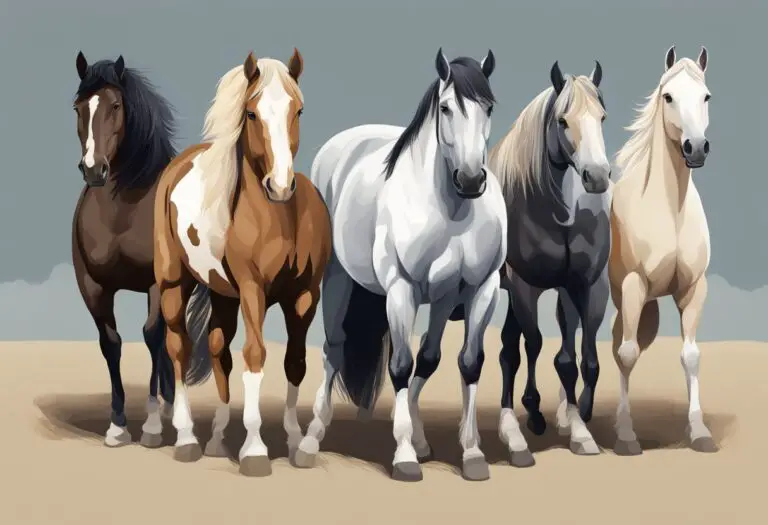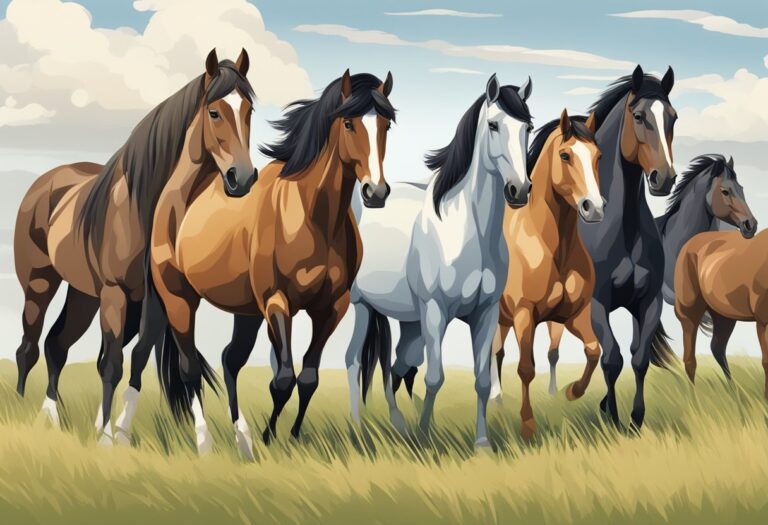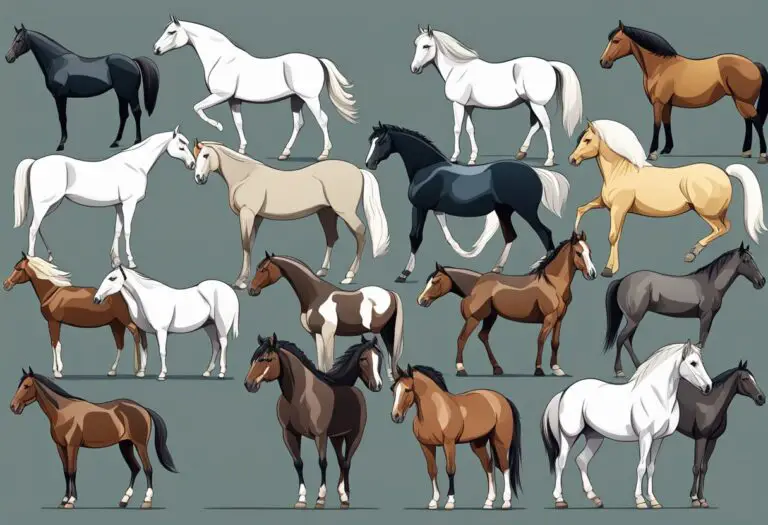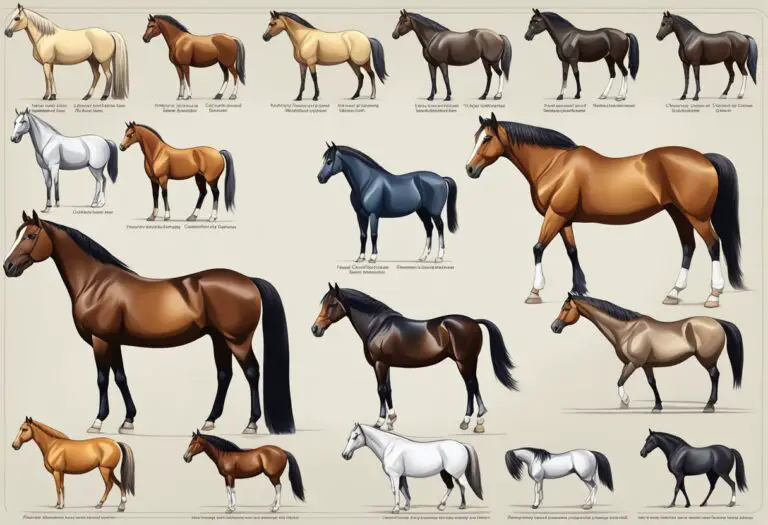When Do Certain Horse Breeds Shed?
Certain horse breeds shed their coats at different times of the year, which can affect their appearance and overall health. Understanding when a particular breed sheds can help horse owners prepare for the change in their horse’s coat and ensure they are taking proper care of their animal. In this article, we will discuss when some of the most popular horse breeds shed and what factors can influence their shedding patterns.
One of the most well-known horse breeds, the Thoroughbred, typically sheds twice a year. They shed their winter coat in the spring and their summer coat in the fall. The shedding process can last for a few weeks, during which time their coat may look patchy and uneven. To help the shedding process along, owners can groom their horse regularly and provide them with a healthy diet.
Another breed that sheds twice a year is the Quarter Horse. They typically shed their winter coat in the spring and their summer coat in the fall, similar to the Thoroughbred. However, some Quarter Horses may shed more frequently due to changes in their environment or health. Owners should pay attention to their horse’s coat and behavior to determine if any changes in shedding patterns are occurring.
Understanding the Shedding Process

Shedding is a natural process that occurs in all horses. It is a way for horses to get rid of their old, damaged hair and replace it with new, healthy hair. The shedding process is influenced by various factors, including genetics, age, nutrition, and environment. Understanding the shedding process is essential for horse owners to ensure their horses are healthy and comfortable.
Factors Influencing Shedding
Genetics plays a significant role in the shedding process. Some horse breeds shed more than others, and some horses within the same breed may shed differently. Age is another factor that influences shedding. Older horses tend to shed more slowly and may retain some of their winter coat longer than younger horses.
Nutrition is also essential for healthy shedding. Horses require a balanced diet with adequate protein, vitamins, and minerals to support healthy skin and hair growth. Poor nutrition can lead to a dull, dry coat that sheds poorly.
Finally, the environment can influence shedding. Horses that live in colder climates may retain their winter coat longer than horses in warmer climates. Horses that are kept indoors with artificial lighting may shed differently than horses that are turned out in natural light.
Shedding Patterns in Horses
Horses typically shed twice a year, in the spring and fall. The spring shedding is known as “shedding out” and is when horses shed their winter coat to prepare for warmer weather. The fall shedding is known as “winter coat growth” and is when horses grow their thick winter coat to prepare for colder weather.
The shedding process usually starts on the neck and shoulders and then moves to the rest of the body. Horses may shed unevenly, with some areas shedding more quickly than others. This is normal and should not be a cause for concern.
In conclusion, understanding the shedding process is crucial for horse owners to ensure their horses are healthy and comfortable. By considering the factors that influence shedding and recognizing the shedding patterns in horses, horse owners can promote healthy shedding and maintain their horses’ well-being.
Breed-Specific Shedding

Different horse breeds have different shedding patterns. Some horses will shed their coats during the spring and fall, while others will shed year-round. The following subsections will outline the shedding patterns of various horse breeds.
Cold Weather Breeds
Horses that originate from colder climates, such as the Icelandic Horse and the Norwegian Fjord, tend to shed their coats in the spring. This is because their winter coats are thick and heavy to keep them warm during the colder months. As the weather warms up, they shed their winter coats to make way for a lighter summer coat.
Warm Weather Breeds
Horses that originate from warmer climates, such as the Arabian and Thoroughbred, tend to shed their coats in the fall. This is because their summer coats are thin and light to help them stay cool in the heat. As the weather cools down, they shed their summer coats to make way for a thicker winter coat.
Year-Round Shedders
Some horse breeds, such as the Appaloosa and the Quarter Horse, shed year-round. This means that they will shed their coats continuously throughout the year, rather than just during specific seasons. These horses tend to have a shorter and finer coat, which means they shed less hair at a time compared to breeds with thicker coats.
It is important to note that individual horses may shed differently depending on their health, age, and environment. Regular grooming and a healthy diet can help promote healthy shedding in all horse breeds.
Managing Shedding in Horses

Horse shedding is a natural process that occurs in response to changes in daylight and temperature. While all horse breeds shed, the timing and duration of shedding can vary depending on the breed and individual horse. Here are some techniques for managing shedding in horses.
Grooming Techniques
Regular grooming is essential for managing shedding in horses. Grooming helps to remove loose hair, dirt, and debris from the horse’s coat, which can reduce the amount of hair that is shed. Use a rubber curry comb to loosen and remove dirt and hair from the coat, followed by a stiff-bristled brush to remove the loosened hair. A shedding blade can also be used to remove large amounts of hair from the coat.
Dietary Considerations
Dietary changes can also help to manage shedding in horses. Feeding a balanced diet that is rich in essential fatty acids, such as omega-3 and omega-6, can help to promote healthy skin and coat. Adding a supplement that contains biotin and other essential vitamins and minerals can also help to promote healthy hair growth.
Environmental Management
Managing the horse’s environment can also help to reduce shedding. Providing shelter from the sun and wind can help to reduce the amount of hair that is shed. Keeping the horse’s stall clean and free of dust and dirt can also help to reduce shedding. Using a fly sheet or blanket can help to protect the horse’s coat from sun damage and reduce the amount of hair that is shed.
By using these techniques, horse owners can manage shedding in their horses and keep their horses looking healthy and beautiful all year round.
Health and Shedding

Normal vs. Abnormal Shedding
All horse breeds go through a natural shedding process, where they lose their winter coat and grow a summer coat. This process usually occurs in the spring and can last for several weeks. During this time, horse owners may notice an increase in loose hair and shedding.
It is important to note that shedding is a normal process and should not be a cause for concern. However, if a horse is shedding excessively or showing signs of bald patches or skin irritation, it may be a sign of an underlying health issue. In such cases, it is recommended to consult with a veterinarian to rule out any potential health problems.
Recognizing Shedding Issues
Horse owners should keep an eye out for any changes in their horse’s shedding patterns. If a horse is shedding more than usual or showing signs of bald patches or skin irritation, it may be a sign of an underlying health issue. In addition, if a horse’s coat is not shedding evenly or is shedding in patches, it may be a sign of a skin condition or parasite infestation.
To prevent shedding issues, it is important to maintain a horse’s overall health and hygiene. This includes regular grooming, proper nutrition, and regular veterinary check-ups. In addition, horse owners should be aware of any changes in their horse’s behavior or physical appearance and address any issues promptly.
Overall, shedding is a normal process for horses, but excessive shedding or shedding issues may be a sign of an underlying health issue. Horse owners should be aware of their horse’s shedding patterns and seek veterinary care if necessary.







